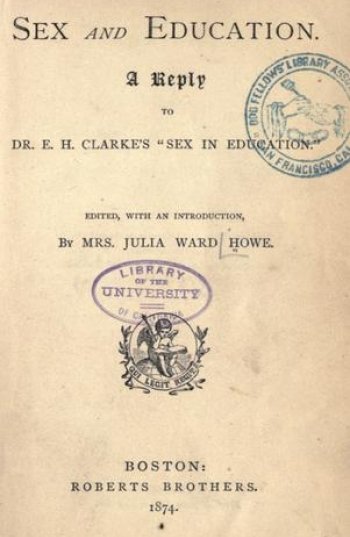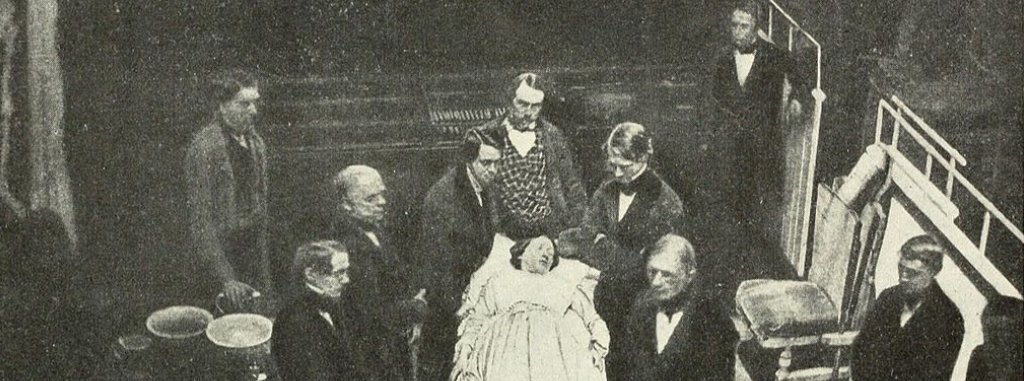Looking for rhetorical patterns in pharmaceutical literature and antifeminist arguments against women’s education.
If you’ve ever watched the movie Little Women, you may remember a young Kirsten Dunst saying with a righteous anger that reverberated out of the screen: “Mr. Davis said it is as useful to educate a woman as it is to educate a female cat."
When Louisa May Alcott wrote the novel that many consider a foundational work in women’s literature, the opinions of Mr. Davis and his ilk were common. Such opinions could be largely attributed to Dr. Edward Hammond Clarke (1820-1877), a man who taught “materia medica” (the forerunner to pharmacy) courses at Harvard University and is noted for his antifeminist text Sex in Education: Or, A Fair Chance for the Girls (1873).
Though numerous historians have picked through Clarke’s writings, a Michigan Technological University researcher for the first time connects Clarke’s pharmaceutical and antifeminist texts through their rhetorical structure and argument.
Andrew Fiss, assistant professor of technical and professional communication, has published “Structures of Antifeminism: Drugs and Women’s Education in the Texts of Dr. Clarke” in Peitho Journal. Fiss studies science communication and the rhetoric of science and technology specifically. His research, though examining the writings of a man 141 years in the grave, finds new relevance in the era of the #MeToo movement. Clarke’s antifeminism framed women’s education as a dangerous drug, and dehumanized female students as curious creatures little more than objects of medical research.
The “question” of women’s education.
“I became interested in this because there was an urban legend at Vassar College, where I did my undergraduate degree, about these ideas,” Fiss says. “The legend is that there was a person who looked at the education students were receiving at Vassar—which was a women’s college at the time—and worried it would make their brains grow so much they would not be able to have children.”
At the time of Clarke’s writings, medicine was moving from its roots in botany—with a heavy emphasis on how similar medicinal plants might have similar effects on the human body—toward the emphasis on clinical observations of physiological effects of particular treatments. Women’s education was also becoming increasingly common, a trend Clarke found disturbing.

Clarke’s musings on the effects of education on women’s bodies are shocking, particularly because a man who was trusted as an expert in his field based his antifeminist views on anecdotes, and because ironically, much of his adoption of physiological and clinical methods into his materia medica lectures was influenced by his friend Dr. Marie Zakrzewska’s enthusiasm for scientific, rather than botanically focused, medicine. Zakrzewska, who emigrated from Germany, founded the New England Hospital for Women and Children, the second hospital in America to be run by female surgeons and physicians.
There does not appear to be a record of whether Clarke and Zakrzewska’s friendship survived the publication of Sex in Education. Many prominent, well-educated women including Mary Putnam Jacobi, Eliza Bisbee Duffey and Julia Ward Howe refuted Clarke’s publication at the time, and it has been vigorously refuted ever since.
The whole is greater than the sum of its parts.
Fiss began his exploration of Clarke’s texts with the assumption that Clarke made blatantly sexist comments in his letters and books in medicine and pharmacy. However, Fiss discovered while looking for Clarke’s antifeminism in his medical work, there were actually important instances of Clarke’s medical work in his antifeminism.
“There was a formulaic way in which he taught that seemed to enter the antifeminist educational work he published,” Fiss says.
Fiss argues that the rhetoric of both Clarke’s materia medica lectures about drug use and his antifeminist writings were rooted in a common structure and four-part arrangement: discussion of physiological action of a drug, clinical application, followed by the potential for overuse of a drug, and finally proper use of a drug. For Clarke’s writings about education, the formula remains, with the overuse of education substituted for drug abuse.
Clarke’s rhetorical structure reveals how important it is to pay attention to patterns in the structure of popular scientific texts and the specialist work that was published by the same person.
“I’m interested in science communication and how scientists can address non-expert audiences. Strangely enough, that’s what Edward Clarke was doing in Sex in Education,” Fiss says. “But at the same time, there’s the idea of considering a scientist’s whole body of work, because it is possible to see connections to what they’ve published in specialty fields. Even if it seems when they’re addressing a non-expert audience, that what they say is a matter of opinion and prejudice, there may be connections to their science. It’s a disturbing thing, but also something people in technical and scientific communication should realize.”
Clarke’s writings also encouraged objectifying female students as mere objects of medical inquiry. Yet, Fiss says, such objectification hasn’t stopped but has evolved.
“Educational institutions have a legacy of objectifying students and encouraging objectification,” Fiss says. “And unfortunately, and though I think there are various reasons for it, it’s something that happens, especially in STEM (science, technology, engineering and math) classes. Sometimes, when STEM researchers look at their students, it’s difficult for them to see them as people, not just as things they can study.”
Michigan Technological University is a public research university founded in 1885 in Houghton, Michigan, and is home to more than 7,000 students from 55 countries around the world. Consistently ranked among the best universities in the country for return on investment, Michigan’s flagship technological university offers more than 120 undergraduate and graduate degree programs in science and technology, engineering, computing, forestry, business and economics, health professions, humanities, mathematics, social sciences, and the arts. The rural campus is situated just miles from Lake Superior in Michigan's Upper Peninsula, offering year-round opportunities for outdoor adventure.






Comments